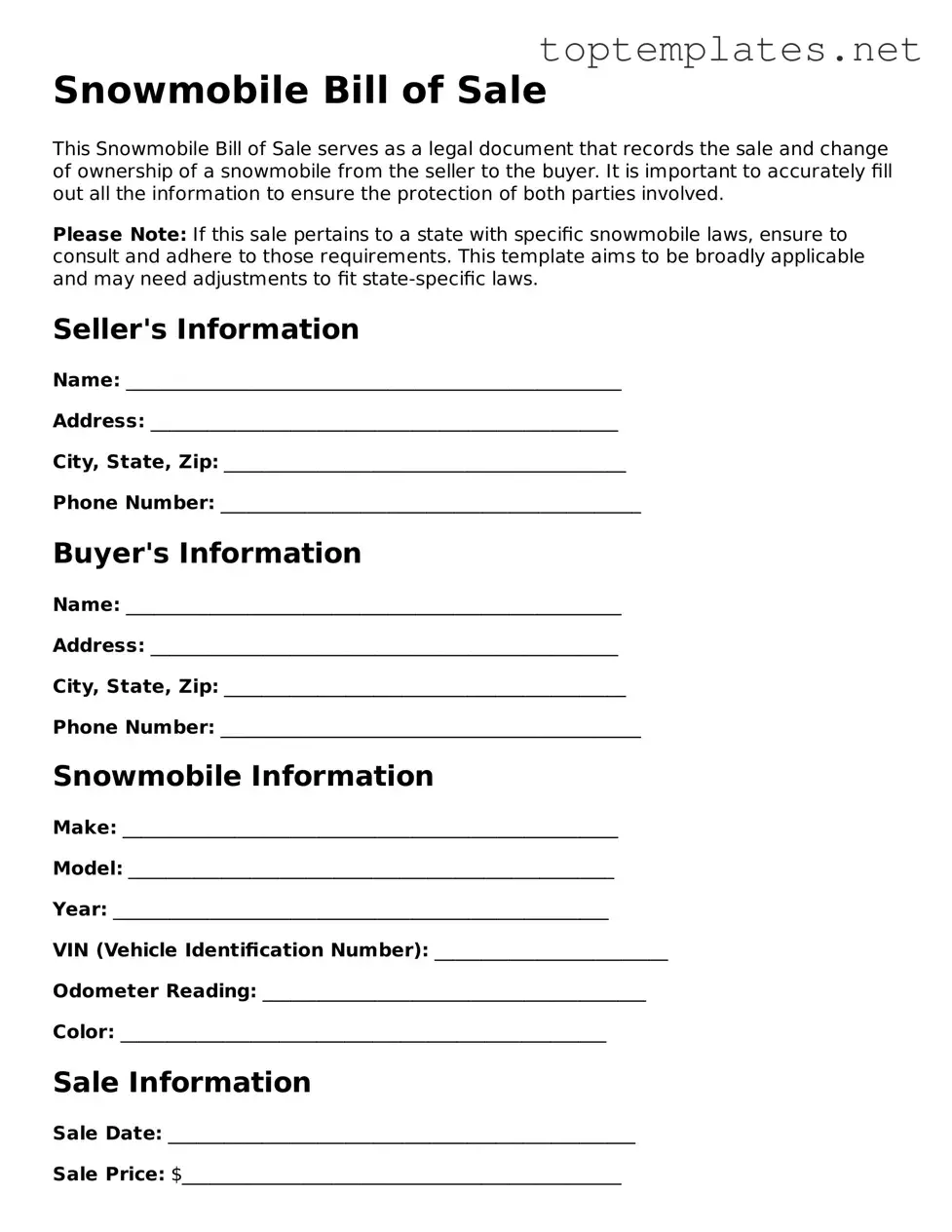Snowmobile Bill of Sale
This Snowmobile Bill of Sale serves as a legal document that records the sale and change of ownership of a snowmobile from the seller to the buyer. It is important to accurately fill out all the information to ensure the protection of both parties involved.
Please Note: If this sale pertains to a state with specific snowmobile laws, ensure to consult and adhere to those requirements. This template aims to be broadly applicable and may need adjustments to fit state-specific laws.
Seller's Information
Name: _____________________________________________________
Address: __________________________________________________
City, State, Zip: ___________________________________________
Phone Number: _____________________________________________
Buyer's Information
Name: _____________________________________________________
Address: __________________________________________________
City, State, Zip: ___________________________________________
Phone Number: _____________________________________________
Snowmobile Information
Make: _____________________________________________________
Model: ____________________________________________________
Year: _____________________________________________________
VIN (Vehicle Identification Number): _________________________
Odometer Reading: _________________________________________
Color: ____________________________________________________
Sale Information
Sale Date: __________________________________________________
Sale Price: $_______________________________________________
The seller affirms that the information provided about the snowmobile is accurate to their best knowledge and that the snowmobile is being sold in "as-is" condition, with no guarantees or warranties provided.
Signatures
Once the document is filled out completely, both the buyer and seller should sign and date below. It is advised to make copies of the signed document for both parties.
Seller's Signature: _________________________________________
Date: _____________________________________________________
Buyer's Signature: __________________________________________
Date: _____________________________________________________
